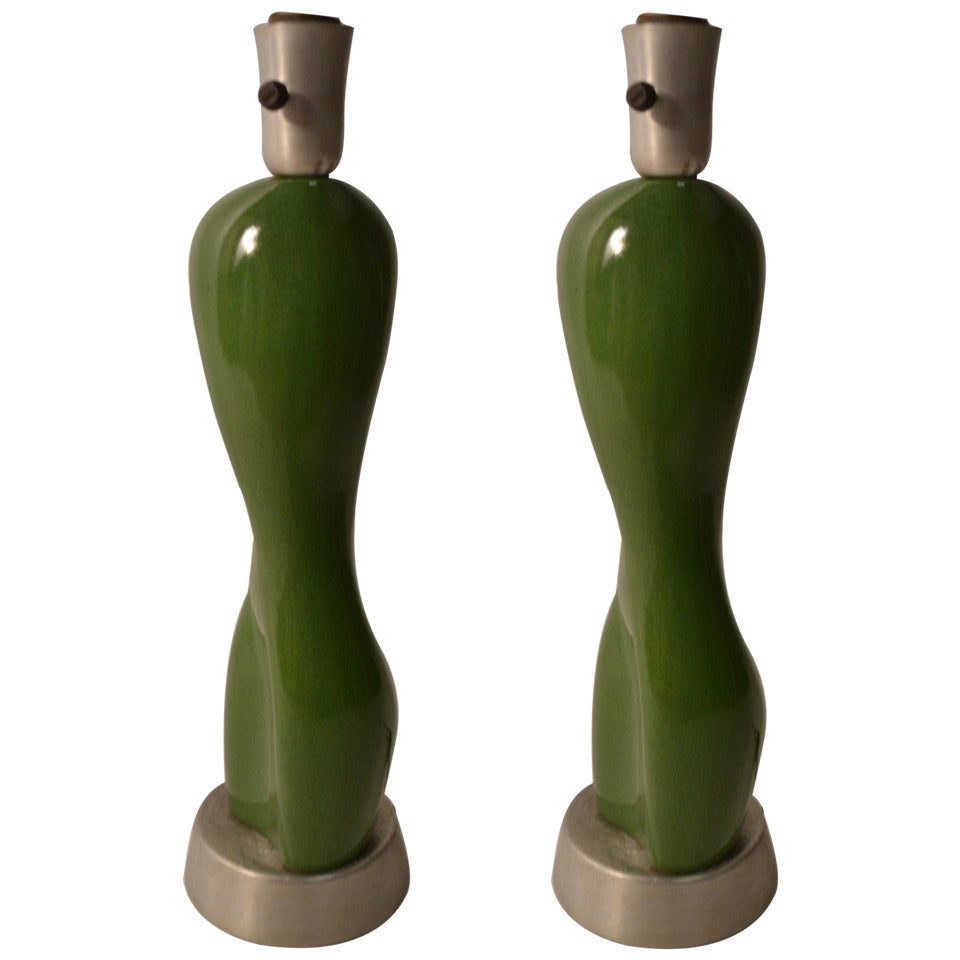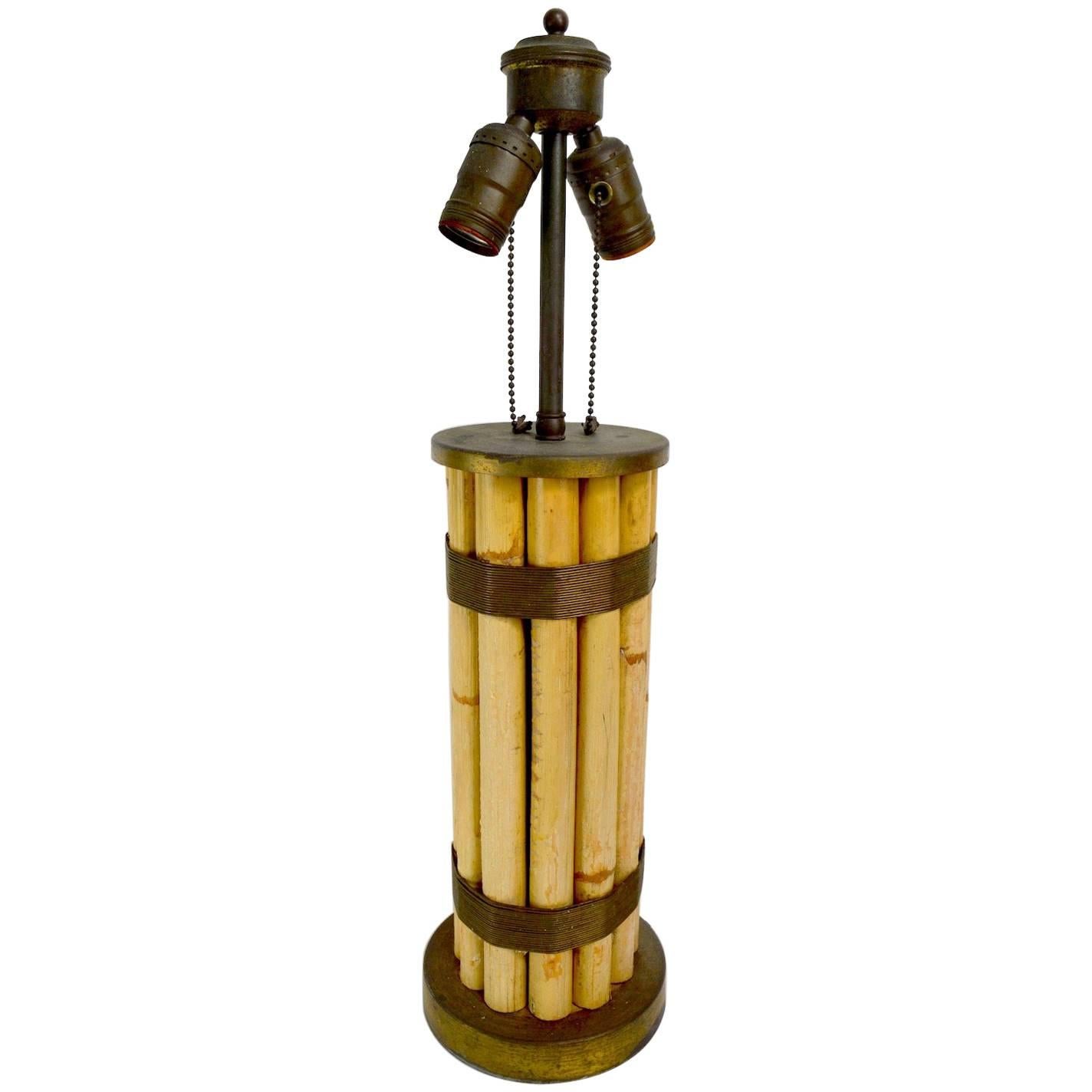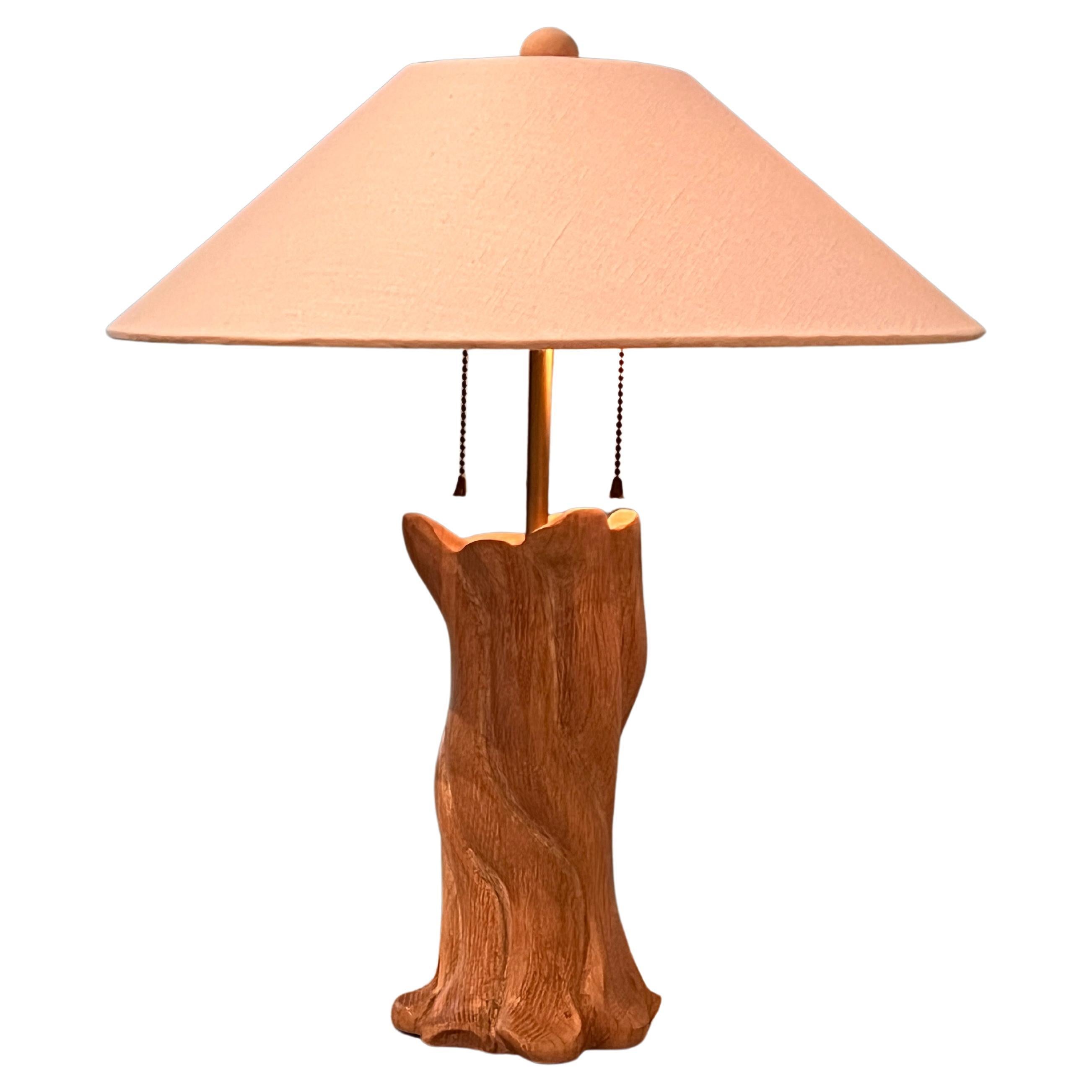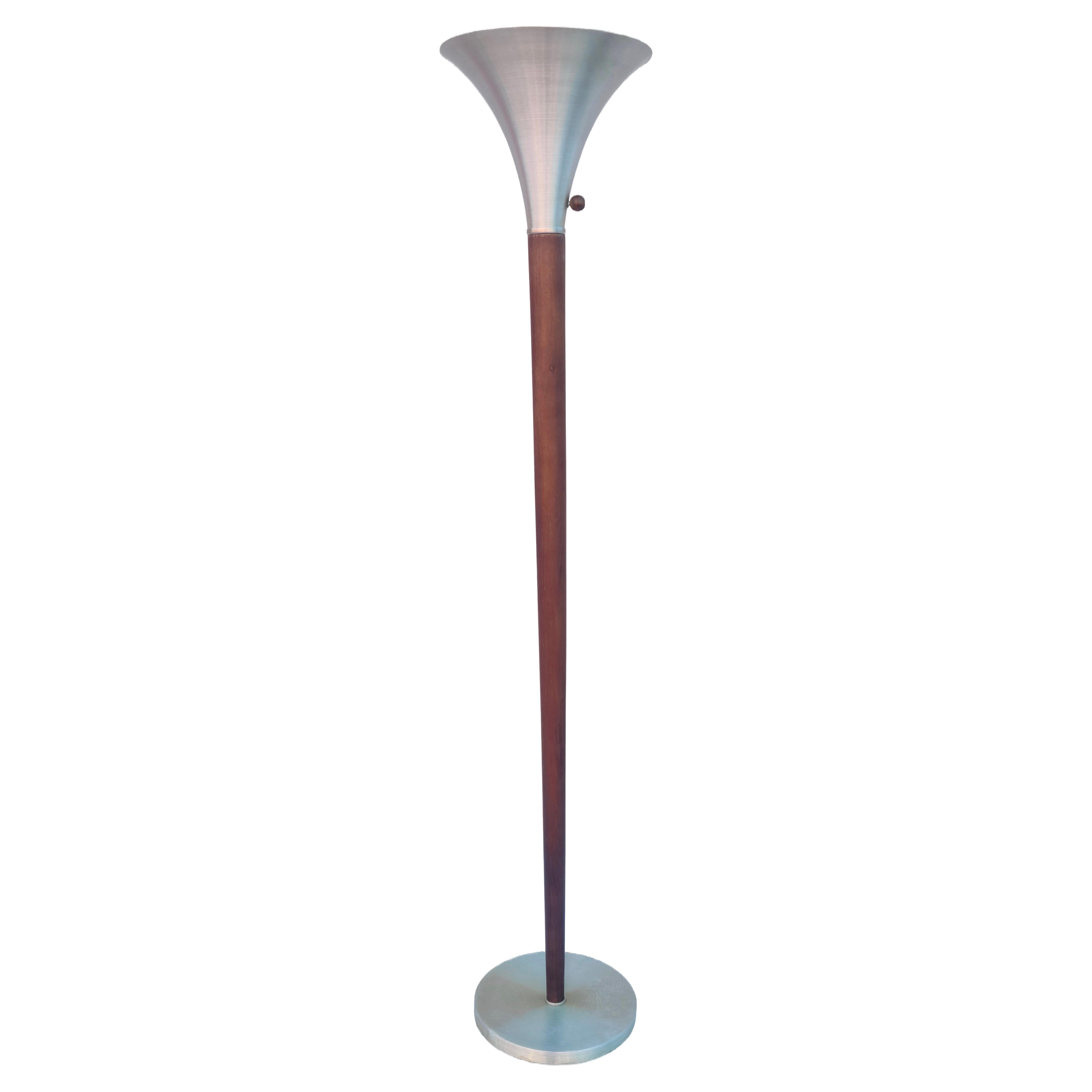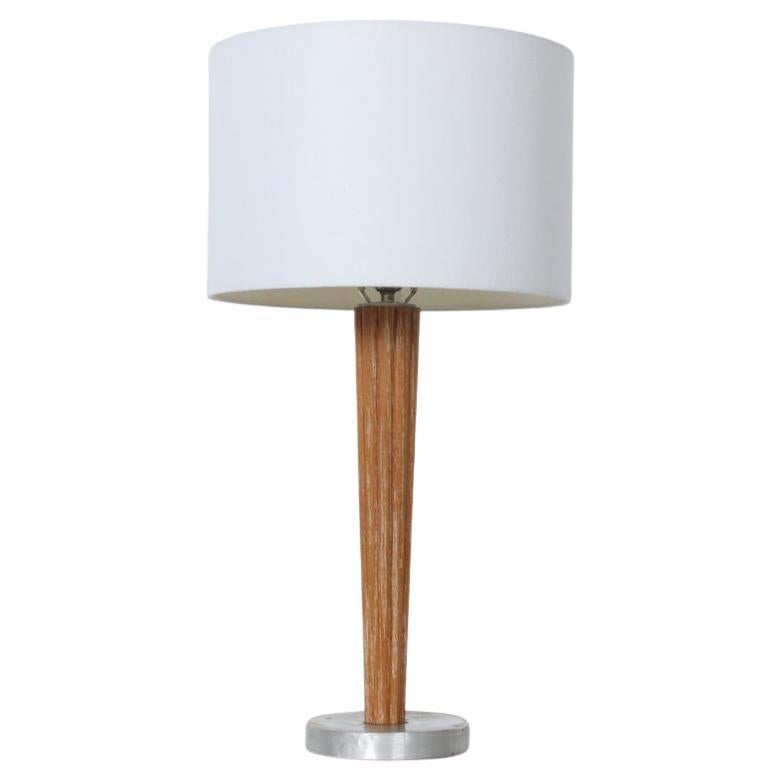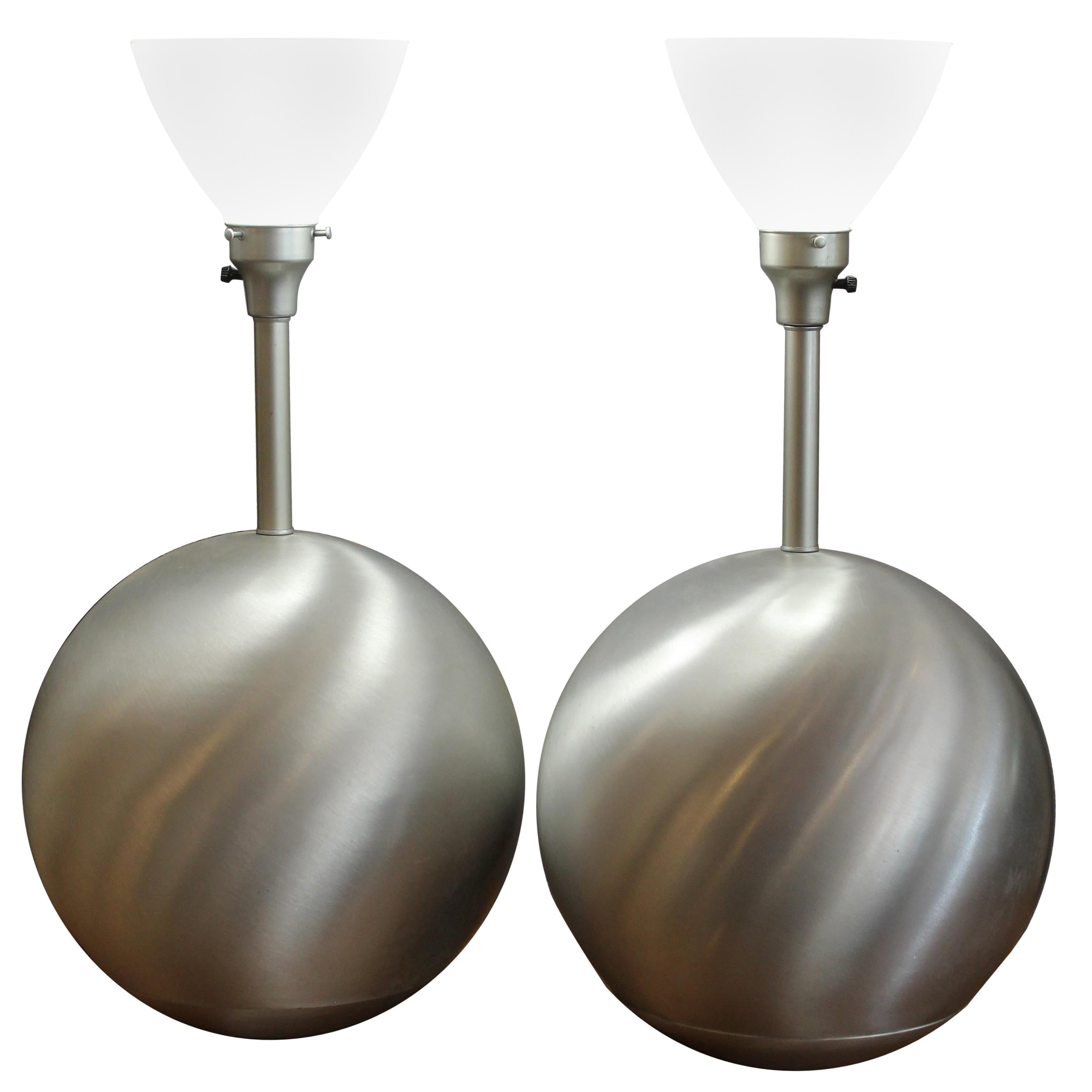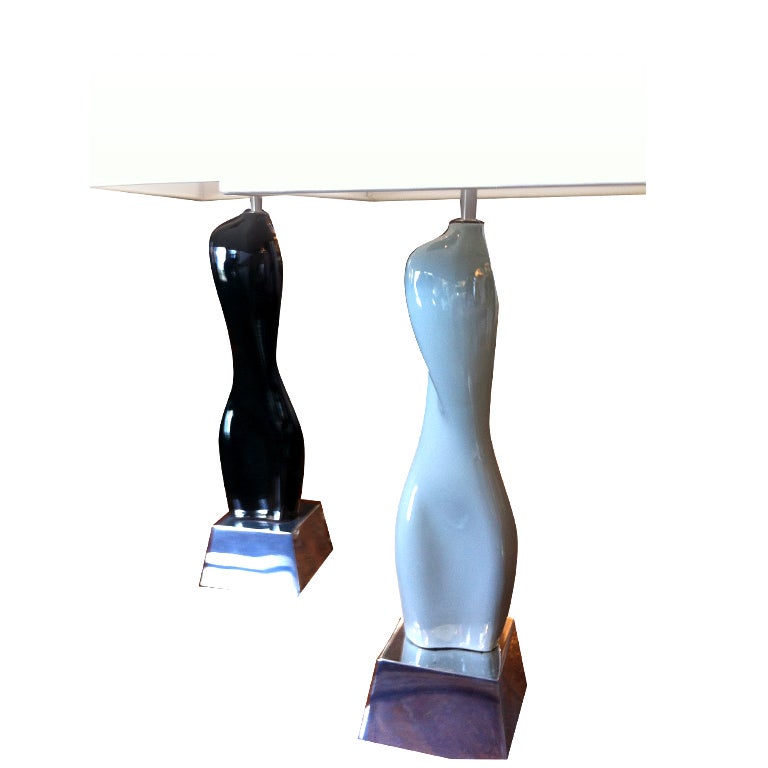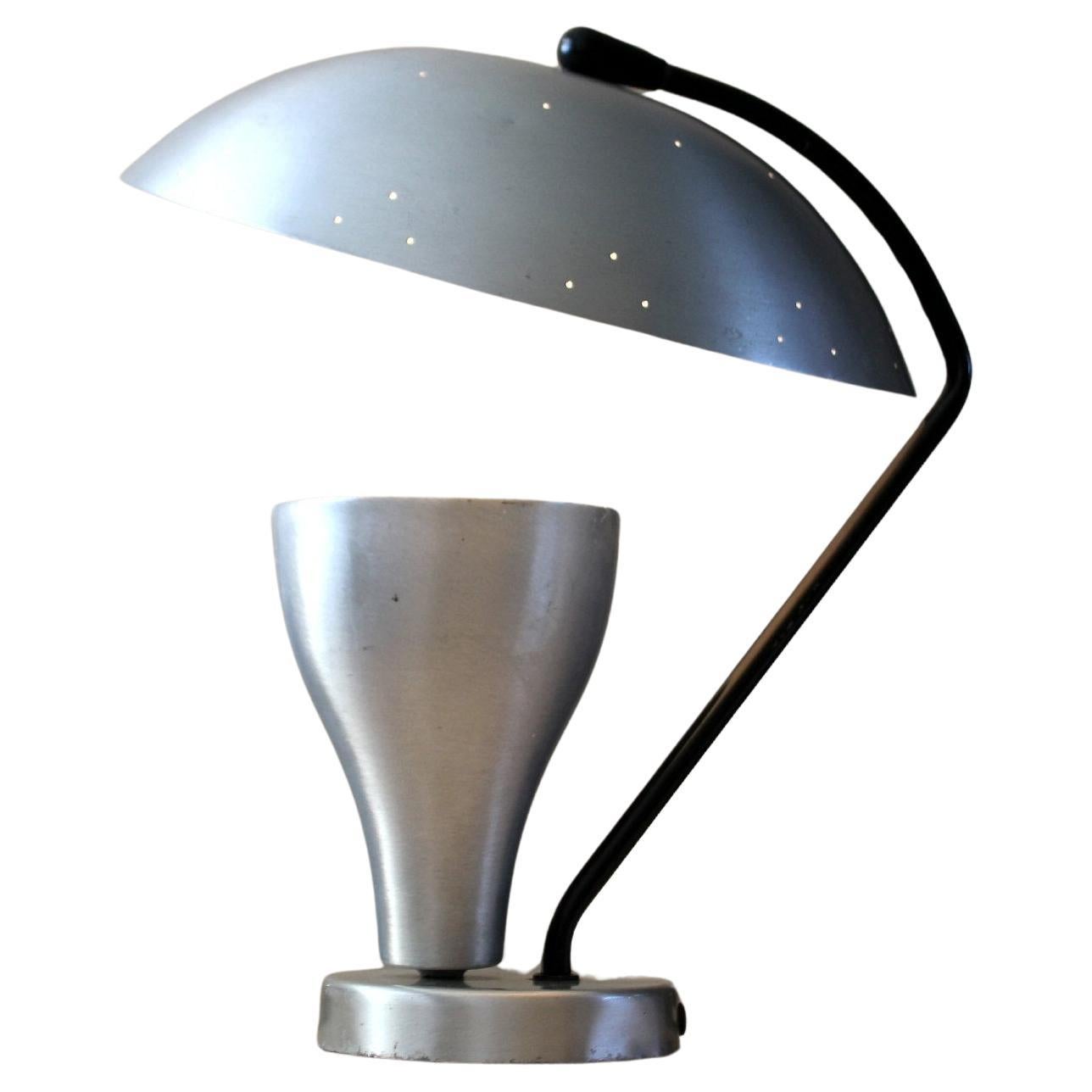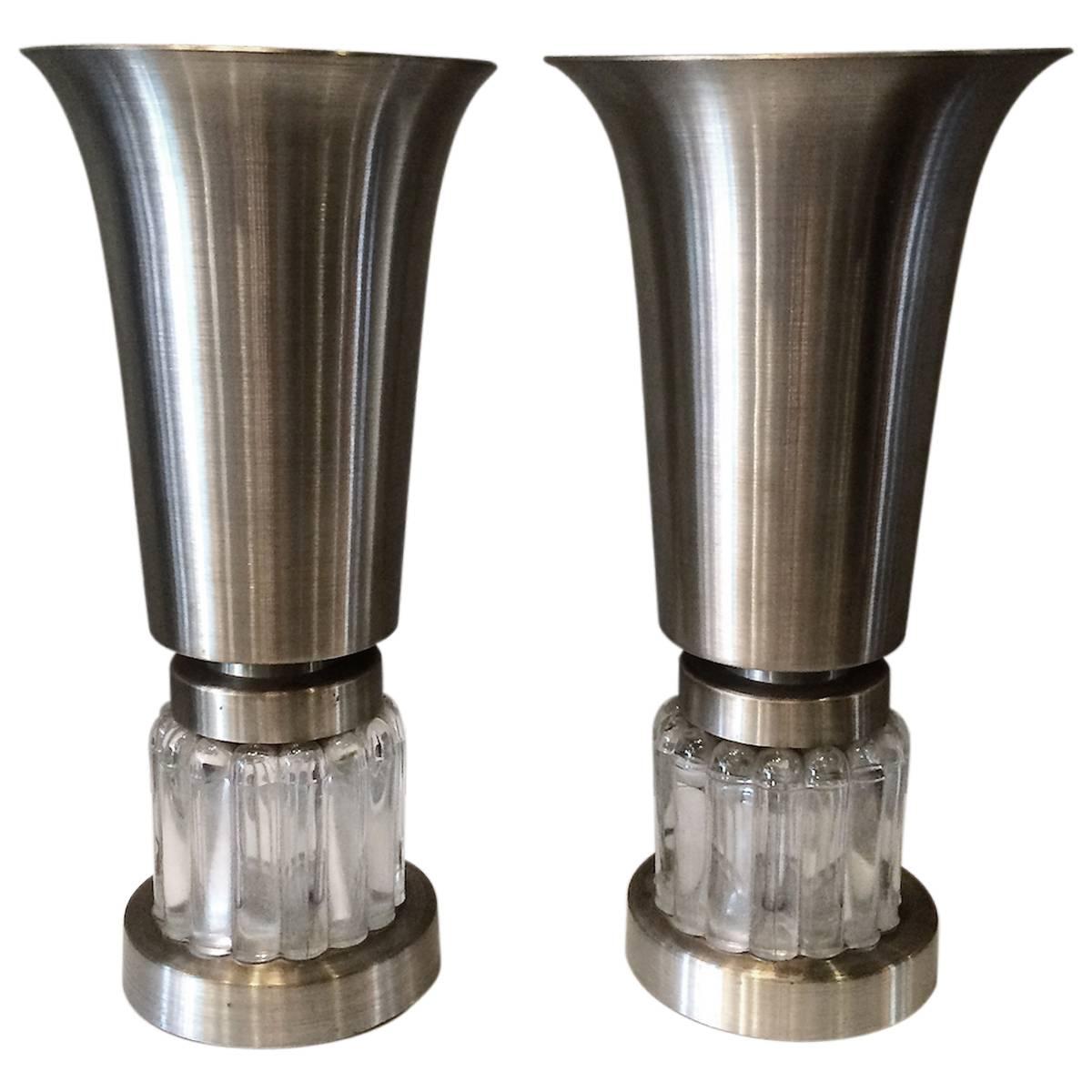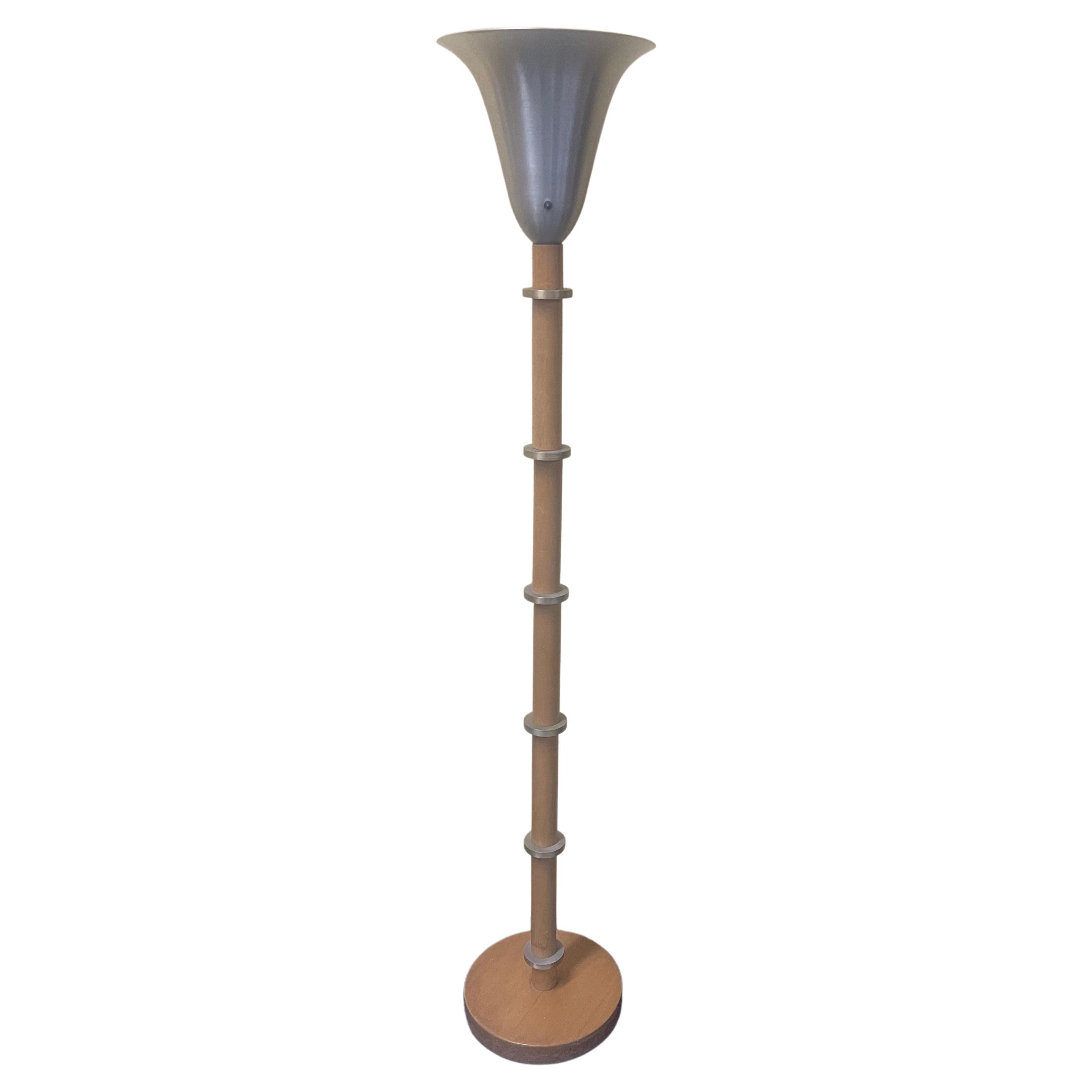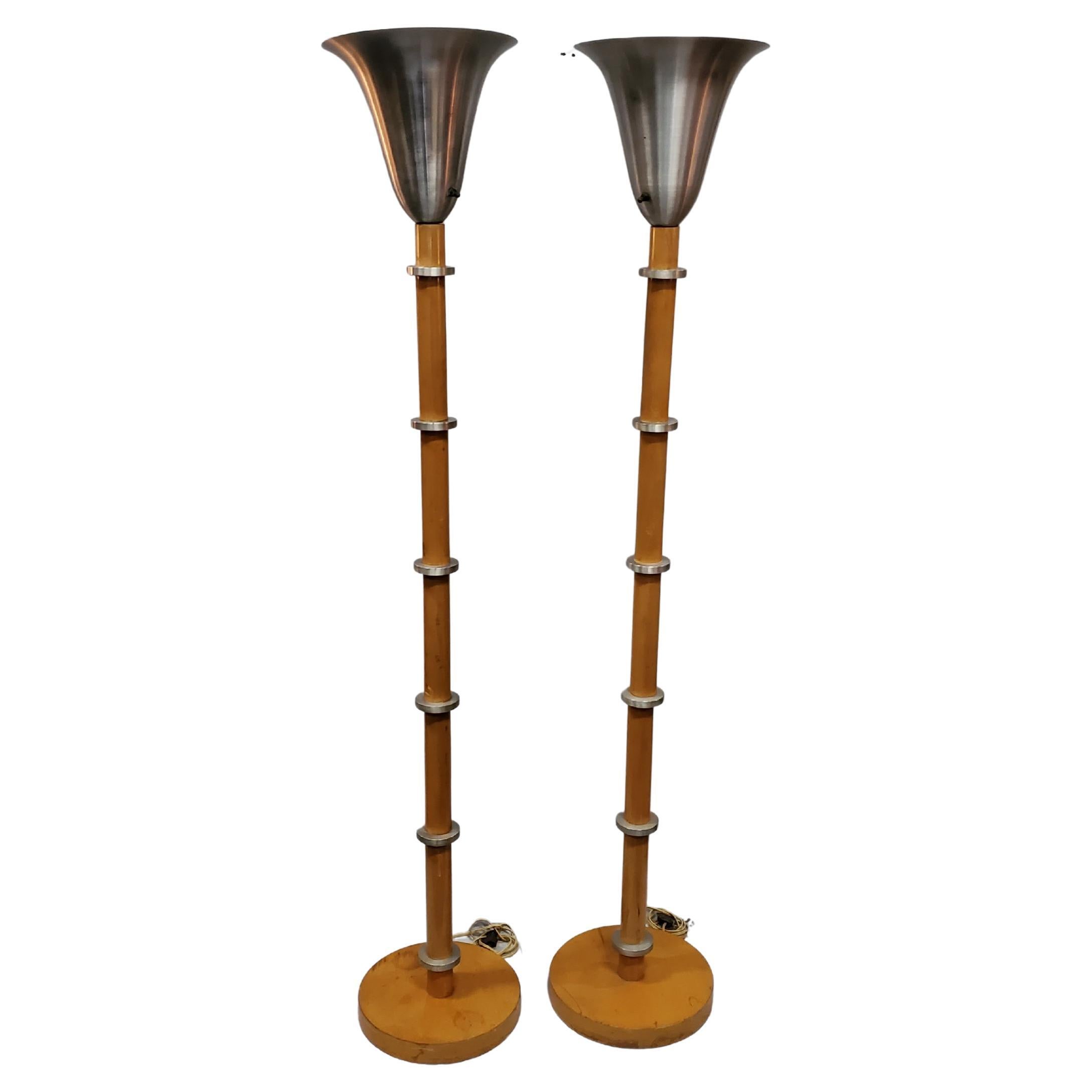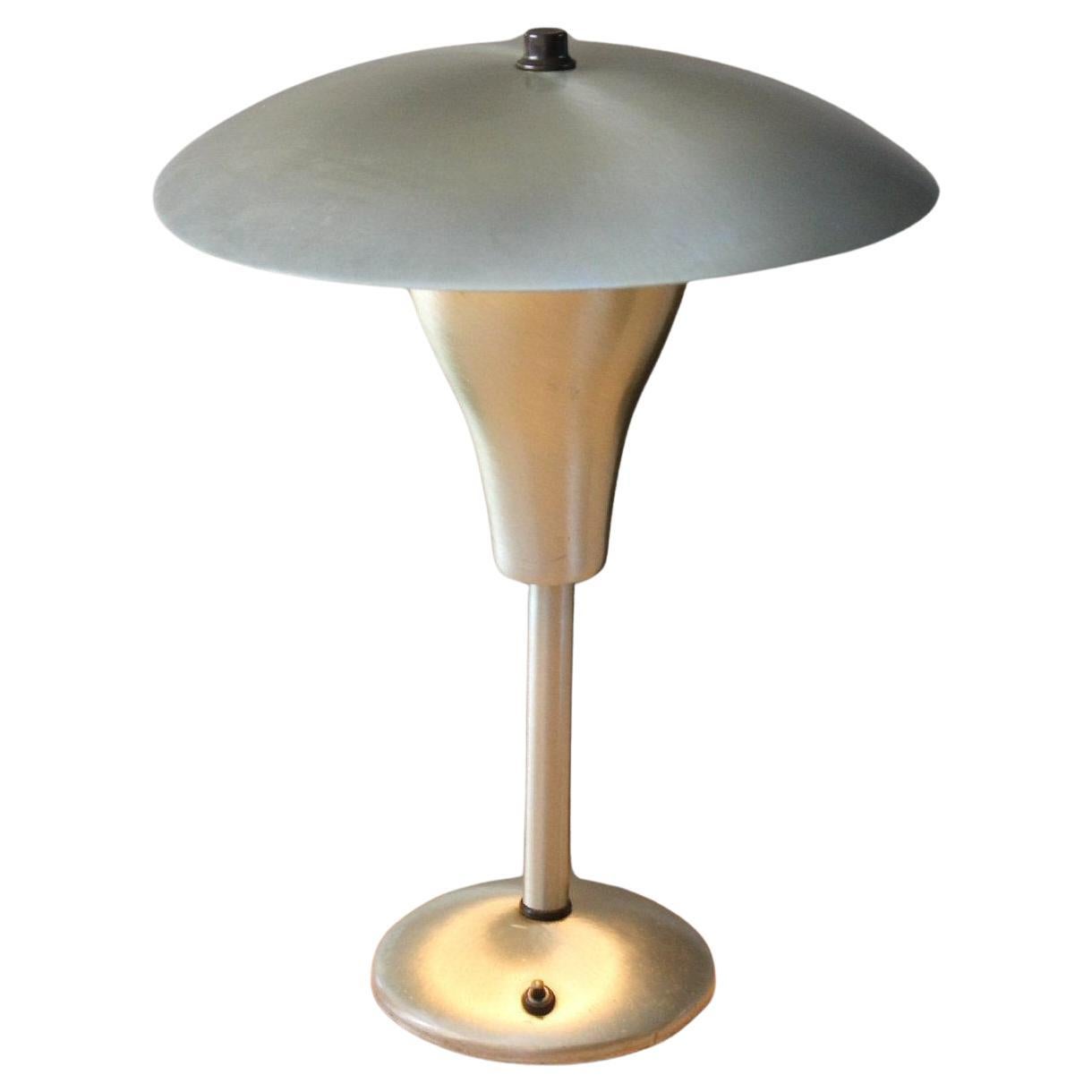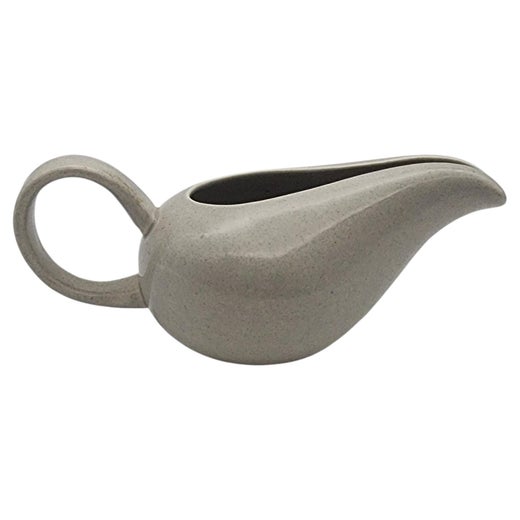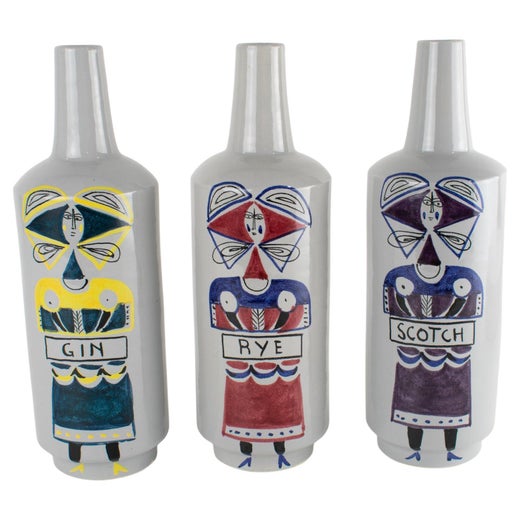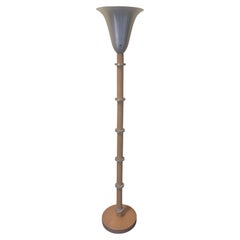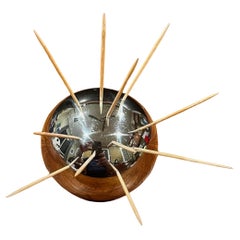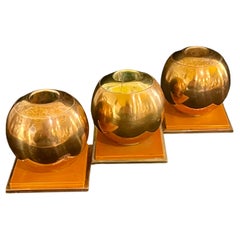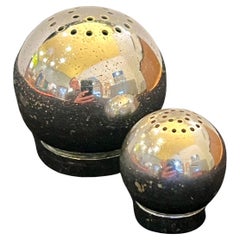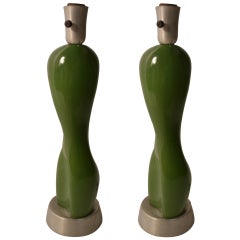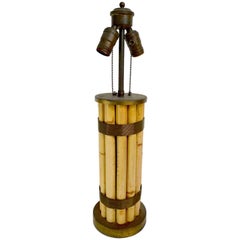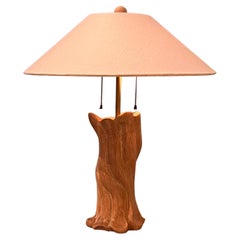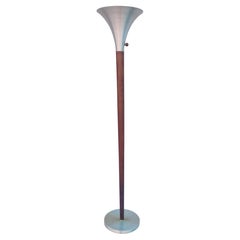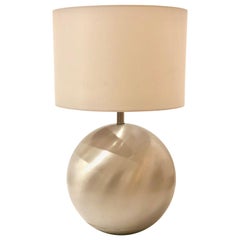
Russel Wright for Raymor Spun Aluminum Large Table Lamp
View Similar Items
Russel Wright for Raymor Spun Aluminum Large Table Lamp
About the Item
- Creator:Russel Wright (Designer),Raymor (Retailer)
- Dimensions:Height: 29 in (73.66 cm)Diameter: 17 in (43.18 cm)
- Style:Art Deco (Of the Period)
- Materials and Techniques:
- Place of Origin:
- Period:
- Date of Manufacture:1940s
- Condition:Wear consistent with age and use.
- Seller Location:San Diego, CA
- Reference Number:1stDibs: LU936612713281
Russel Wright
While industrial designer Russell Wright may be known to modern furniture enthusiasts for his streamlined end tables, dining chairs and other pieces, he is universally revered for a line of tableware he created called American Modern. Efficient, practical, and striking in their elegant forms and warm colors, the American Modern ceramic pieces, which included bowls, pitchers, dishes, and other items, became the best-selling dinnerware of all time. Today, vintage Russell Wright American Modern tableware is an evergreen favorite of art collectors and interior designers alike.
Born in 1904 in Ohio, Wright was surrounded by inspiration for the furniture he would one day design. He was raised in a Quaker household and grew up with the spare, meticulously handcrafted furniture for which the Quakers are known. As a young man, he studied art and sculpture at the Art Academy of Cincinnati and the Art Students League of New York, going on to study law at Princeton University in New Jersey. But Wright loved the arts and abandoned his pursuit of a law degree to create stage sets in Princeton and Paris alongside fellow noted designer Norman Bel Geddes.
In 1927, Wright married artist and sculptor Mary Einstein. Together, they moved to New York City, where Wright began to create sculptures. Mary convinced him to create metal bookends from his sculptures, and later, when he began to craft bar accessories from chrome, he turned to aluminum, a much cheaper material for the purposes of mass production (his barware was eventually included in the "Machine Art" show at the Museum of Modern Art in 1934, which was curated by Philip Johnson).
Mary worked on marketing Russell's products, successfully proposing everyday uses for Wright's beautifully designed housewares. She is said to have been a pioneer in the world of lifestyle marketing, coining the terms "American Modern" and "blonde" to describe the charming, light-colored maple furniture he created for Conant Ball, which was known at the time for its reproductions of American Colonial furniture.
While Wright had created some Art Deco furnishings for Heywood-Wakefield, it was this group of bedroom furniture for Conant Ball that got its name, American Modern, from Mary. Under her guidance, Wright's attractive, functional designs for the home gained renown, leading to commissions by prestigious companies like the Steubenville Pottery Company.
In 1935, Wright formed Russell Wright Associates with Irving Richards, an entrepreneur who had worked with Lightolier and would later establish Raymor. In collaboration with Richards, Wright debuted the first line of American Modern dinnerware in 1939, which was initially produced by Russell Wright Associates and then manufactured by Steubenville for two decades. The line sold over 200 million pieces during its 20 years of production. In 1955, Wright was selected by the U.S. State Department to research handicraft industries in Southeast Asia, a trip that influenced his later designs.
Throughout his life, Wright continued to design furniture and housewares, with the works' signature earth tones, curved forms, and clean silhouettes of his floor lamps, lounge chairs, and serveware remaining popular staples in American households. In his later years, he focused on designing and building his home, Manitoga, and working with the National Parks Service to develop the "Summer in the Parks" program.
Upon Wright's death in 1974, Manitoga was given to the Nature Conservancy. It was declared a National Historic Landmark in 2006 and today houses the Russell & Mary Wright Design Gallery, where many of Wright's works stand on permanent display. In 2011, stamps from the U.S. Postal Service featured Wright's image as one of the United States' twelve most influential industrial designers.
Find vintage Russel Wright lighting, seating, tables, serveware, ceramics and glass on 1stDibs.
Raymor
Few had their finger on the pulse of American furniture like importer and distributor Raymor. Founder Irving Richards first had his eyes opened to the world of furniture while attending the 1928 Salon d’Automne art and design fair in Paris. He joined Lightolier two years later and developed its business relationships, including with designer Russel Wright.
Wright and Richards met in 1935 and Russel Wright, Inc. was formed in 1936. Its American Modern ceramic tableware, produced under the name Wright Accessories in 1938, was a notably lucrative collaboration. Following the early success of American Modern, Richards obtained the majority share of Wright Accessories and changed its name to Raymor Mfg Division Inc. in 1941.
By 1952, the exclusivity over American Modern had ended (the line was initially produced by Wright Associates and later manufactured by Steubenville for two decades). To keep up with American markets, Raymor worked with prominent designers such as George Nelson, Arthur Umanoff, Ray and Charles Eames, and Hans J. Wegner.
The company’s imports expanded to Denmark, which contributed to the rise of Scandinavian modern designs in the American market. Throughout the 1950s, Richards established relationships with factories in Scandinavia, Italy and Germany, as well as with the influential tastemaker and importer Charles Stendig.
The furniture company Simmons bought Raymor in 1963 and changed its name to Raymor Richards, Morgenthau Inc. in 1969. During that time, Raymor’s Omnibus range of Scandinavian-style wall units became widely popular, along with Italian glass and pottery like Bitossi ceramics designed by Aldo Londi and Bagni ceramics by Alvino Bagni.
Shifting styles coupled with rising competition, and the departure of Richards from the company, ended Raymor. By the late 1970s, Raymor faced a wave of international factories able to produce similar products of lesser quality for a lower cost. Buyers were eager to frequently change their interior styles, limiting the need for high-end, durable furniture, which Raymor had been importing.
On 1stDibs, find a collection of vintage Raymor ceramics, lamps, decorative objects and more.
More From This Seller
View AllEarly 20th Century North American Art Deco Floor Lamps
Aluminum
20th Century American Modern Serving Pieces
Chrome
20th Century American Art Deco Candlesticks
Bakelite
20th Century American Art Deco Tableware
Chrome
Vintage 1940s American Mid-Century Modern Platters and Serveware
Earthenware
Mid-20th Century American Mid-Century Modern Dinner Plates
Pottery
You May Also Like
Vintage 1940s American Mid-Century Modern Table Lamps
Aluminum
Mid-20th Century American Mid-Century Modern Table Lamps
Brass, Copper
Vintage 1930s Table Lamps
Oak
Vintage 1930s Floor Lamps
Aluminum
Vintage 1940s American Machine Age Table Lamps
Aluminum
Vintage 1940s American Mid-Century Modern Table Lamps
Aluminum
